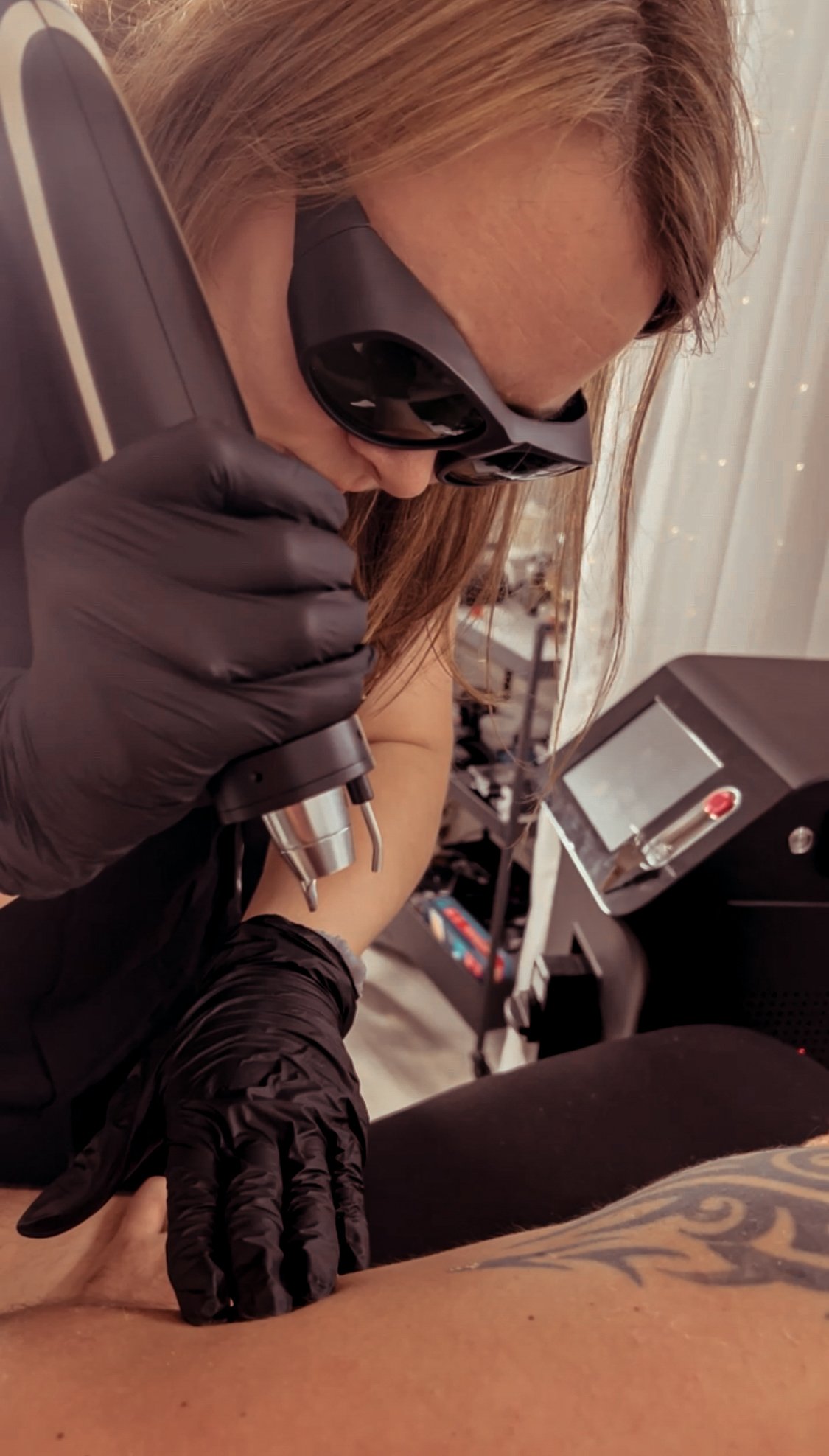LASER TATTOO REMOVAL ☽•☾ PMU LASER REMOVAL ☽•☾ LASER TATTOO REMOVAL ☽•☾ PMU LASER REMOVAL ☽•☾ TATTOO REMOVAL ☽•☾ PMU REMOVAL ☽•☾
LASER TATTOO REMOVAL ☽•☾ PMU LASER REMOVAL ☽•☾ LASER TATTOO REMOVAL ☽•☾ PMU LASER REMOVAL ☽•☾ TATTOO REMOVAL ☽•☾ PMU REMOVAL ☽•☾
PMU & TATTOO LASER REMOVAL
Laser tattoo removal is a safe and effective procedure that uses targeted laser technology to break down the ink particles in unwanted tattoos, allowing your body to naturally flush them out over time. It's the most advanced and widely used method for removing tattoos with minimal risk of scarring.
How It Works
During a session, a specialized laser emits quick pulses of light energy that penetrate the skin and are absorbed by the tattoo ink. The energy causes the ink to shatter into tiny particles, which are then gradually removed by your body’s immune system. Different wavelengths of laser light are used depending on the ink color and depth.
Because tattoos are made with various types of ink and applied at different depths, multiple sessions are usually required to fully fade or remove a tattoo. Sessions are typically spaced 6 to 8 weeks apart to allow the skin to heal and the body to process the ink.
What to Expect
Treatment Time: Sessions are relatively quick — usually 15 to 30 minutes depending on the size of the tattoo.
Sensation: Clients often describe the sensation as similar to the snap of a rubber band against the skin.
Aftercare: Mild redness, swelling, or blistering is normal and usually subsides within a few days. You’ll receive aftercare instructions to support healing and reduce the risk of scarring.
Results: Tattoos will gradually fade with each session. Complete removal may take several treatments, depending on the size, color, ink type, location, and how your body responds.
Is It Right for You?
Laser tattoo removal is suitable for most skin types and ink colors. Whether you're looking to fully remove a tattoo, fade it for a cover-up, or simply lighten certain parts, this treatment offers a precise, customizable solution.

